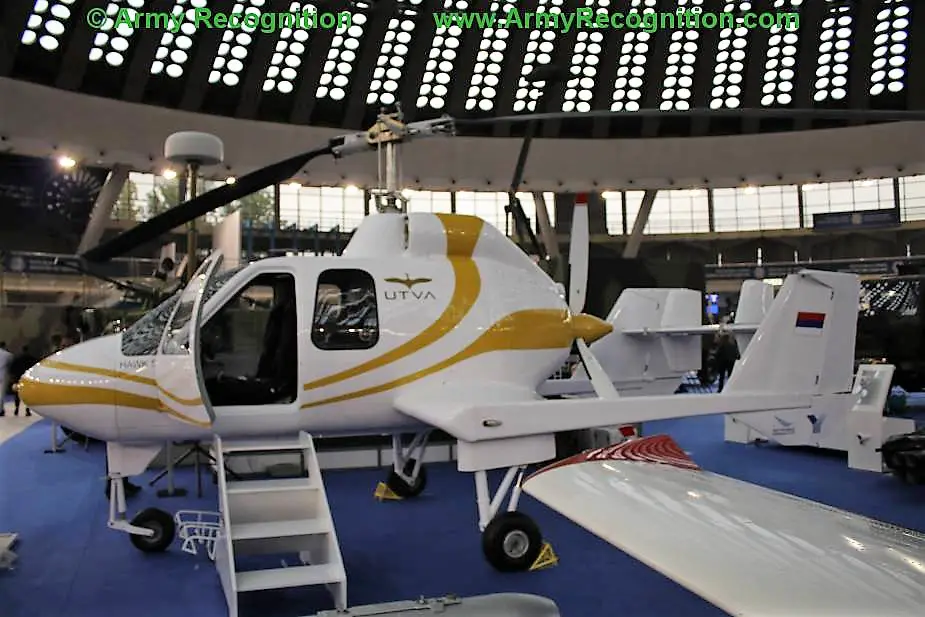Serbian designer and manufacturer is pushing further in the segment of gyrocopters with its newly-designed 4-seat Jastreb 4.
Follow Army Recognition on Google News at this link

Yugoimport Jastreb (Hawk) 4 gyrocopter (Picture source: Army Recognition)
The autogyro was invented by Spanish engineer Juan de la Cierva in an attempt to create an aircraft that could fly safely at low speeds. He first flew one on 9 January 1923, at Cuatro Vientos Airfield in Madrid. The aircraft resembled the fixed-wing aircraft of the day, with a front-mounted engine and propeller. Cierva's autogyro is considered the predecessor of the modern helicopter.
The success of the autogyro garnered the interest of industrialists and under license from Cierva in the 1920s and 1930s, the Pitcairn & Kellett companies made further innovations. Late-model autogyros patterned after Etienne Dormoy's Buhl A-1 Autogyro and Igor Bensen's designs feature a rear-mounted engine and propeller in a pusher configuration.
The term Autogiro was a trademark of the Cierva Autogiro Company, and the term Gyrocopter was used by E. Burke Wilford who developed the Reiseler Kreiser feathering rotor equipped gyroplane in the first half of the twentieth century. The latter term was later adopted as a trademark by Bensen Aircraft.
Yugoimport’s Hawk 4 (Jastreb means hawk in the Serbian language) is motorized with a Rolls-Royce 250-B17 turboprop engine developing 450 hp. The empty weight is 895 kg (1,975 lbs) while its maximum gross weight is 1,720 kg (3,800 lbs). The aircraft's fuel capacity is 300 kg (870 lbs). The Hawk 5 can reach up to 222 km/h (120 kts) at cruise speed. The given range is 580 km (315 nm). The rate of climb is over 1,500 feet/min. The maximum operational altitude is set at 4,877 m (16,000 ft).














